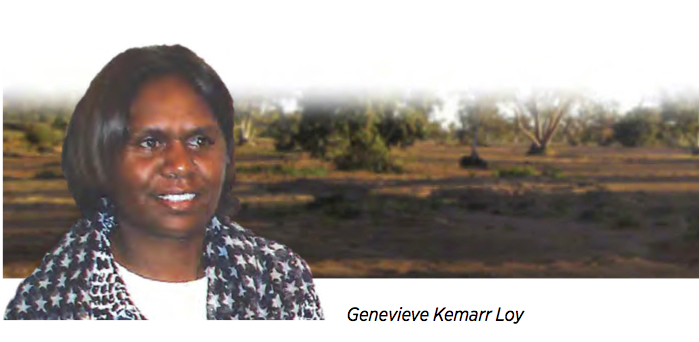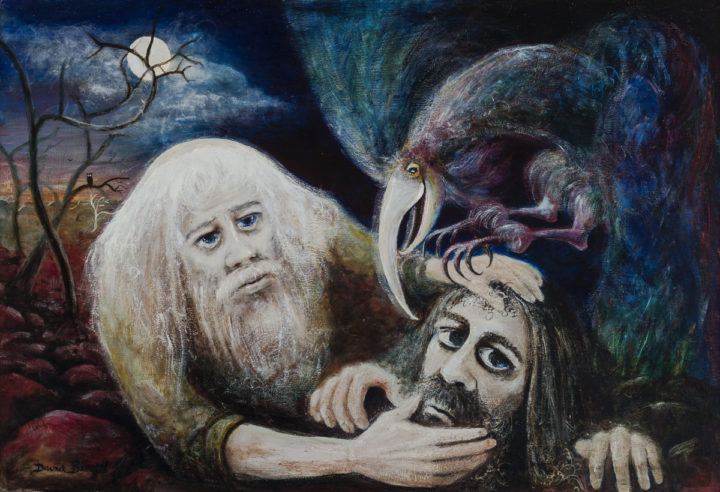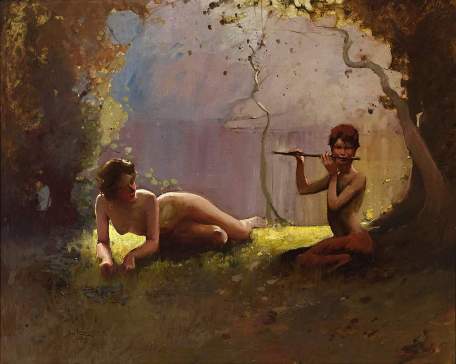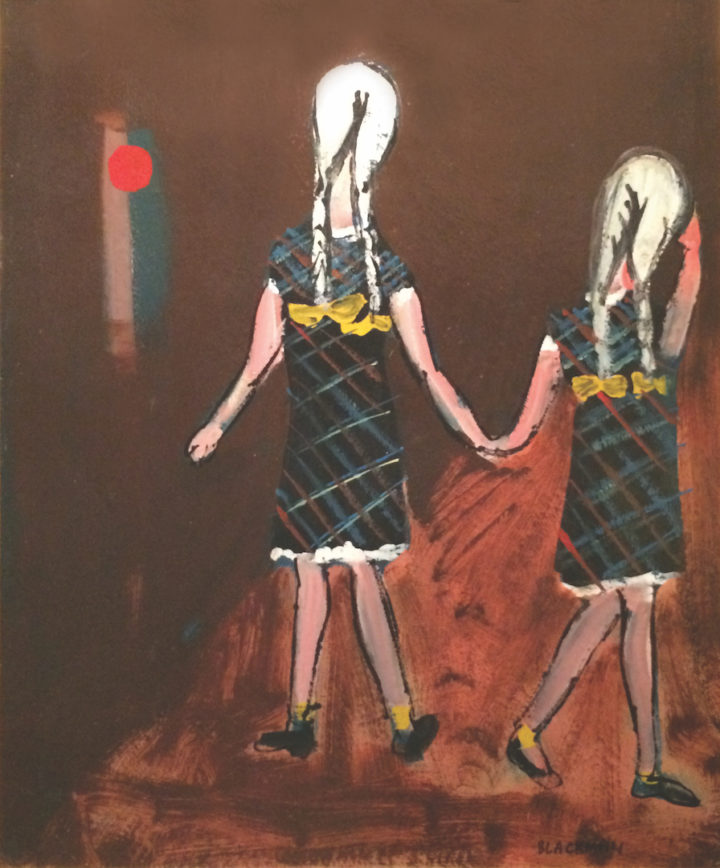We pay tribute to the much admired art world figure Joan McClelland who passed away at the age of 104. Joan was at the helm of the successful Joshua McClelland Print Room for over 70 years, taking over from her husband in the 1950s. She was a well-liked person known for her fairness and professionalism. She inspired confidence in her clients with her understated manner and was a regular at auctions and galleries in Melbourne. Her understanding and knowledge, especially of printmaking was most highly regarded. It was a pleasure to have known Joan and to have been able to work with her. The Joshua McClelland Print Room continues to be a vibrant part of the Melbourne art scene under the management of Joan’s daughter Patricia, now at the new location at Rathdowne Galleries Carlton, run by her second daughter Philippa.
Author: LDFA
A Closer Look At… The Next Generation
To take A Closer Look At… The Next Generation and read further about the paintings of Lorraine Kabbindi White and Genevieve Kemarr Loy, please click here.
The exhibition is showing until Thursday 28 September and please note the Gallery will be closed Friday 29 Sep – Monday 2 Oct inclusive over the AFL Grand Final weekend.
You can preview the exhibition on-line and hear the artists speak about their work and view a video of the exhibition opening with Aunty Joy Murphy AO and Nova Peris OAM – please click here.
Stephen Bowers in The Wall Street Journal
The work of ceramicist Stephen Bowers has been in the papers lately, firstly an article in The Wall Street Journal about the inspiration of the history and tradition of ceramic tableware on contemporary artists.
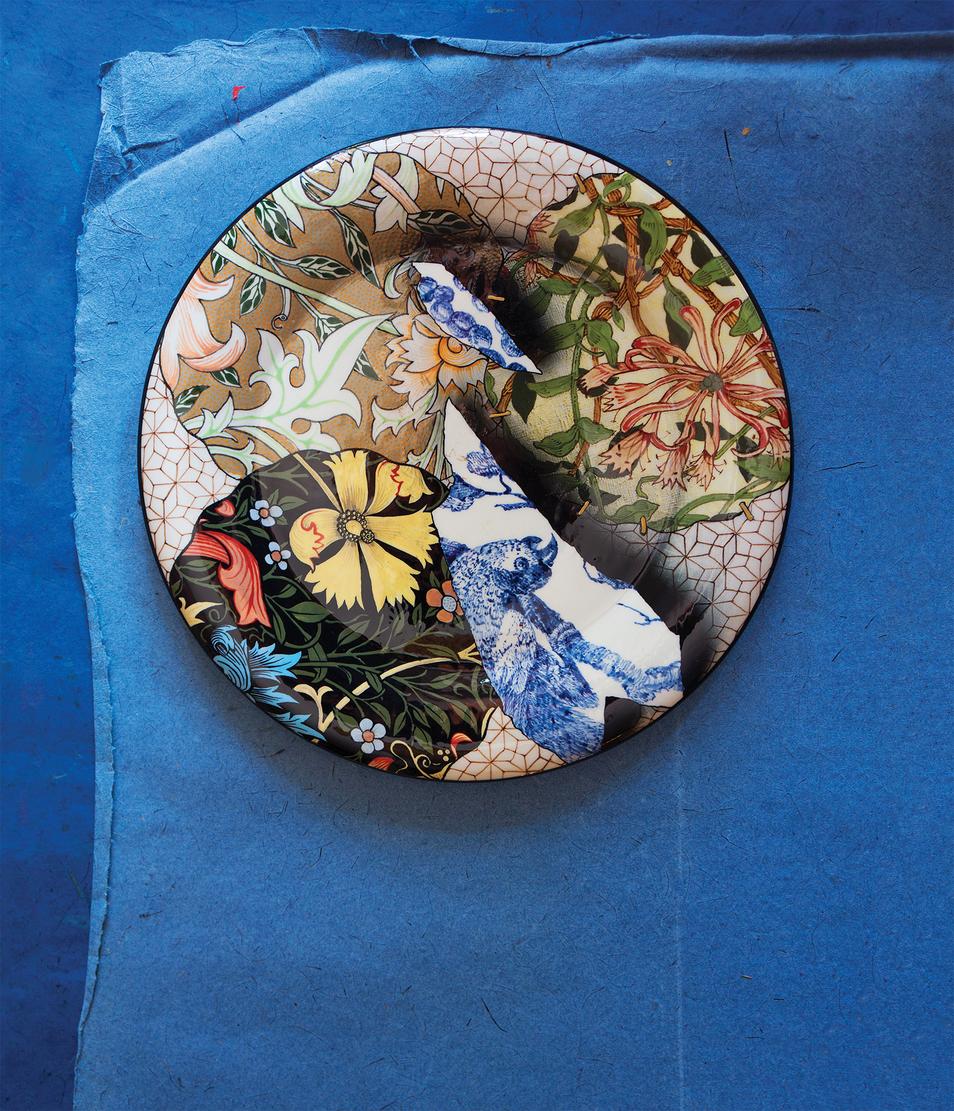
Read here.
Whilst in Australian newspapers, one of Stephen’s impressive large-scale Palaceware vases featured in images promoting the sale of a home in Sydney’s Bellevue Hill.
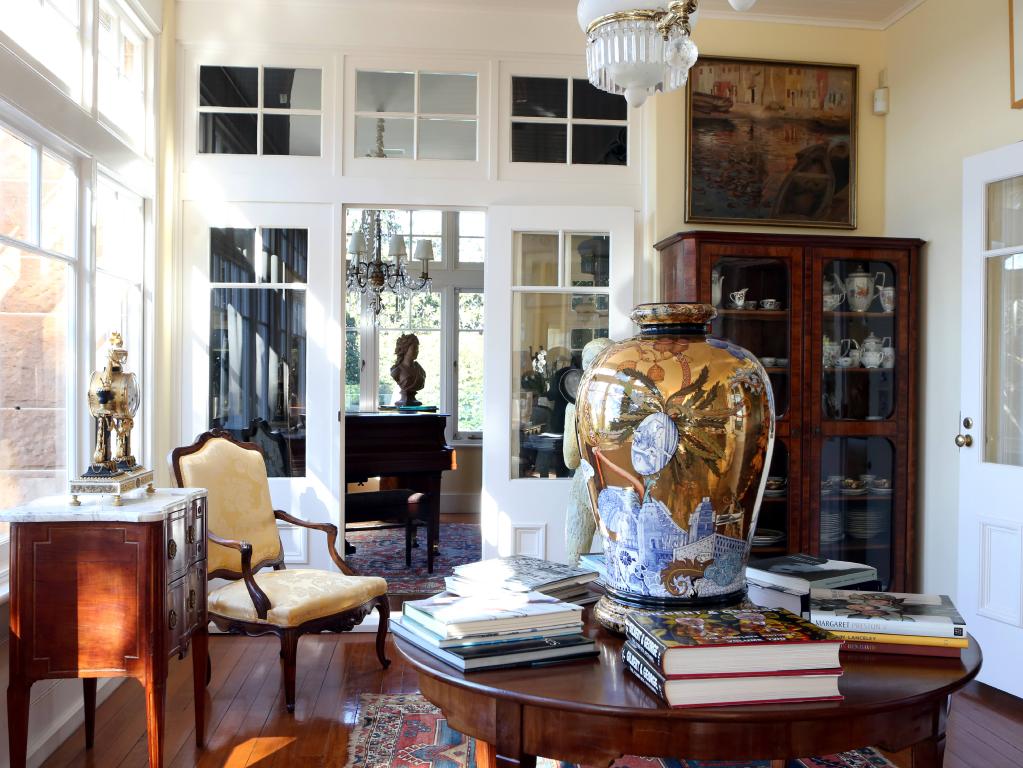
To view available works by Stephen Bowers currently in our stockroom please click here.
Constance Stokes at Mornington Peninsula Regional Gallery
Mornington Peninsula Regional Gallery is showing an exhibition of paintings by Constance Stokes until 17th September bringing together work from her early days as an art student at the National Gallery Art School, in the late 1920s, through to paintings made in the early 1980s. The exhibition includes over 35 paintings covering the breadth of Stokes’s artistic practice across 60 years, exploring stylistic developments and highlighting Stokes’ stunning portraiture and use of colour. Click here for further details.
To view works currently available by Constance Stokes at Lauraine Diggins Fine Art, please click here to view our stockroom. Illustrated above:
Constance Stokes 1906 – 1991 Persimmons c.1975 red ink and pastel on paper 38 x 28 cm
The Next Generation Video of Exhibition Opening
We invite you to watch the video of the exhibition opening for our current show, The Next Generation featuring paintings by Lorraine Kabbindi White and Genevieve Kemarr Loy. We were privileged to have Aunty Joy Murphy AO present Welcome to Country followed by heartfelt remarks from Nova Peris OAM, former Senator and Olympian. We are excited to also provide videos of each of the young artists discussing their work and their influences and inspiration. The Next Generation is showing until 30 September 2017.
To view the videos please click here
Vale Claude Ullin
We are saddened by the news of the death of Claude Ullin AM, founder of the Armadale gallery High on Art in 1994 where he particularly promoted the art of Australian Aboriginal artists. Claude is well known for dedicating 25 years to local government, serving as the Mayor of Stonnington four times.
Claude has been a long term friend to the arts and to Lauraine Diggins Fine Art in particular, and he will be deeply missed. We wish to extend our sincere condolences to his family.
Image: Claude Ullin Art
THE NEXT GENERATION: Lorraine Kabbindi White & Genevieve Kemarr Loy
Upcoming exhibition showing 12 August – 30 September
Following in the footsteps of their grandparents, two young artists, continue the tradition of creating striking artworks inspired by their ancestral landscapes.
Darwin-born Lorraine Kabbindi White will exhibit barks and works on paper depicting her family’s country at Mankung Djang, western Arnhem Land. The influence and teaching of her grandfather Lofty Bardayal Nadjamerrek AO is clearly evident in her confident use of fine white lines set against the red ochre background to paint the spirit beings, fauna and flora of her grandfather’s country, often in his specific “Stone Country” x-ray style.

Genevieve Kemarr Loy is from Utopia, around 300 kilometres north-east of Alice Springs; an area which has produced a number of well-recognised artists including Emily Kngwarray, the Petyarr sisters and the Ngal sisters. Genevieve is the granddaughter of Nancy Petyarr and was taught to paint by her father Cowboy Loy Pwerl. She depicts specific custodial subjects associated with her country, particularly the Bush Turkey story, with a bold use of colour and detailed patterning.
We invite you to preview the exhibition, on our website www.diggins.com.au
A fully illustrated colour catalogue is available to view here, or alternatively contact the Gallery to obtain a copy.
A CLOSER LOOK AT……MYTHS AND LEGENDS in the COLLECTORS’ EXHIBITION 2017
The Collectors’ Exhibition 2017 is an all-encompassing exhibition of Australian art, including artists from colonial to contemporary times and with a selection of indigenous artists. It is stimulating to explore the connections between such a diverse collection of artworks. This could be achieved by comparing works in the same medium (painting, sculpture, works on paper); looking at relationships between particular artists; examining the influence of travel; or exploring a variety of themes including landscape, abstraction, or the portrayal of the figure. For now, we invite you to take A CLOSER LOOK AT… the theme of Myths and Legends in our Collectors’ Exhibition 2017.
The idea of myths and legends applies to a number of artworks in diverse ways, from Greek tales (Leonard French’s The Kings) to Australian narratives, including heroic figures from the bush (Russell Drysdale’s stoic stockman confronting the viewer in Rain at Cattle Creek); Australian explorers (David Boyd Burke and Wills in the Desert); and the pioneering pastoralists surviving on the land (Artur Loureiro (An Australian Scene)).
The Australian landscape itself has a mythic and legendary status, from the indigenous perspective as seen in Elizabeth Kunoth Kngwarray’s majestic painting Yam Seeds and Flowers in My Grandmother’s Country to works like Herbert Gallop’s Hawkesbury River, reminiscent of Arthur Streeton’s iconic The Purple Noon’s Transparent Might.
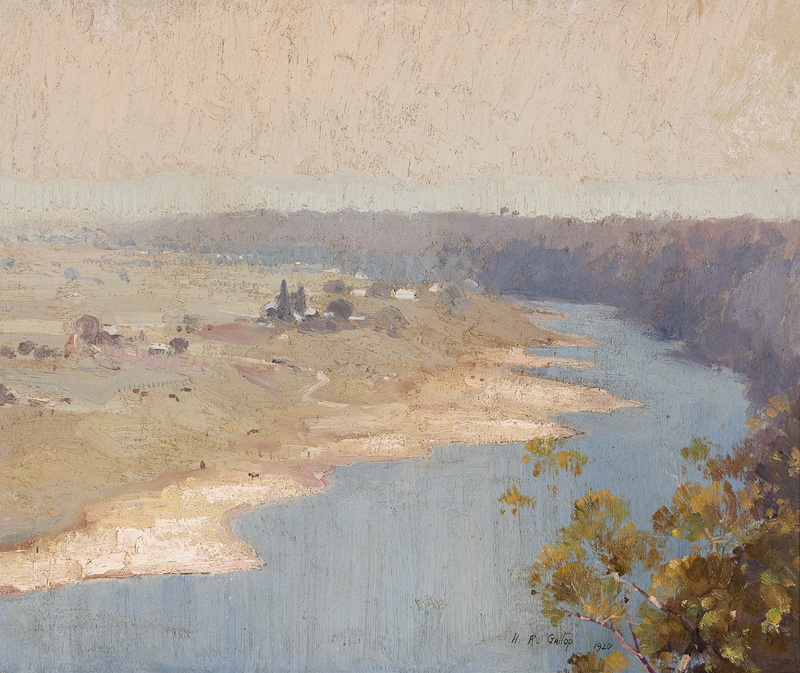
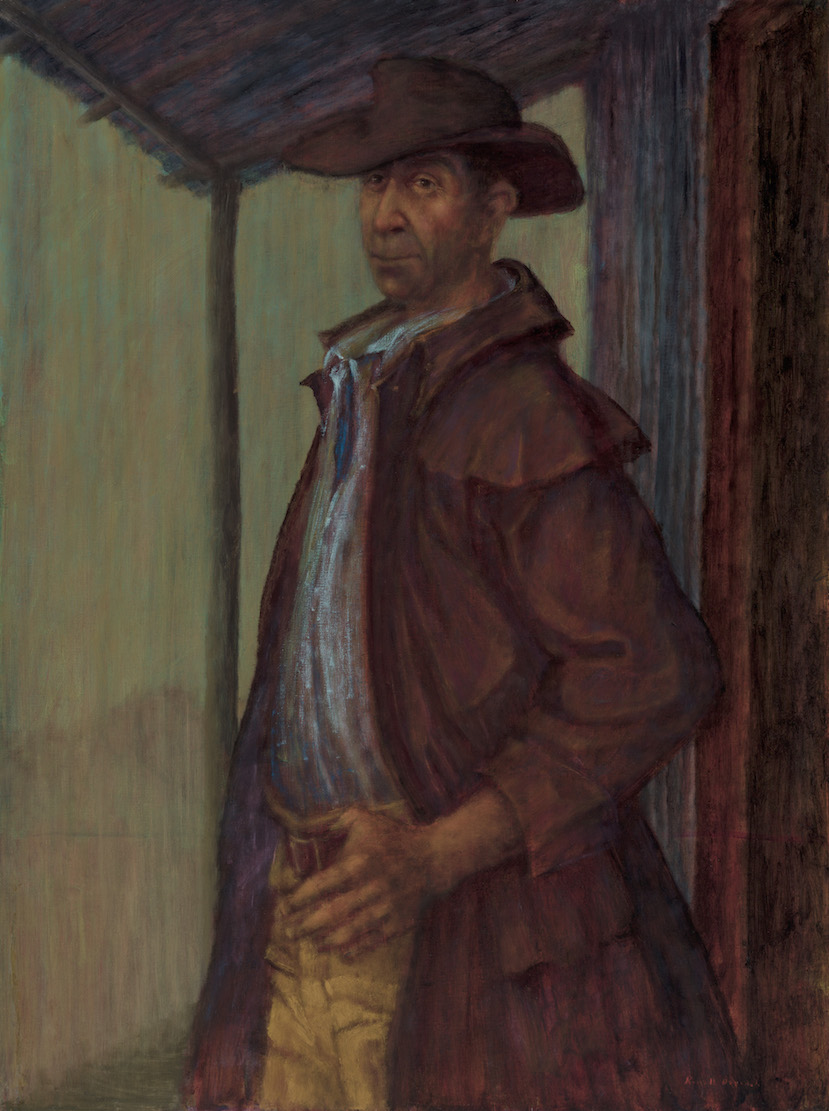
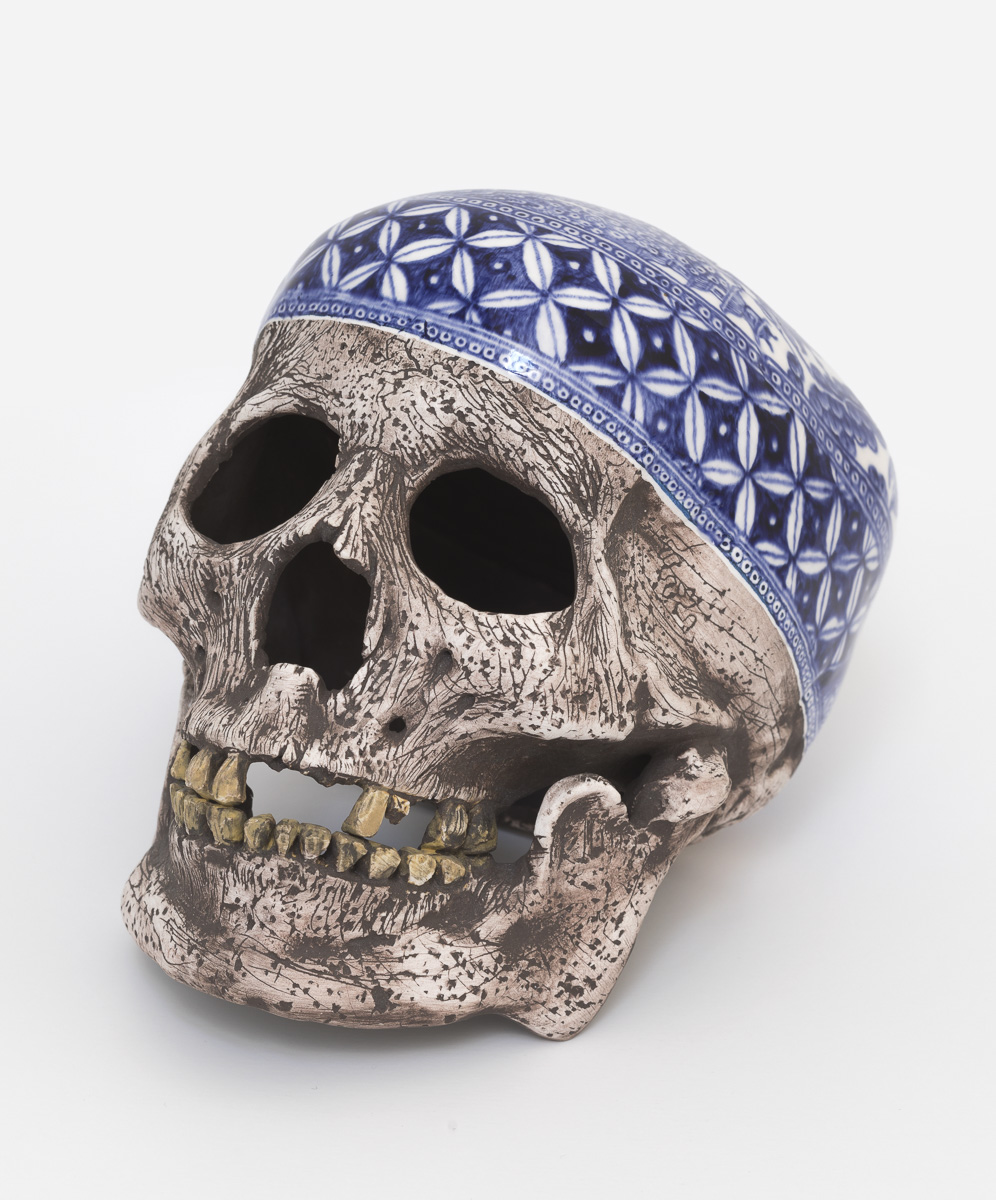
Sometimes the myths and legends grow, sometimes they are constructed, like Stephen Bowers’ witty fictitious skulls which imagine the mortal remains of national types, like The Explorer Skull, projecting blue and white images across the bone china cranium.
Many of the artworks are populated by figures of myth and legend – Sydney Long Faun and Nymph and indigenous spirits – Nelson Maldjiwa Nayilbidj Mamandi Spirit Attacking Mimih Spirit.
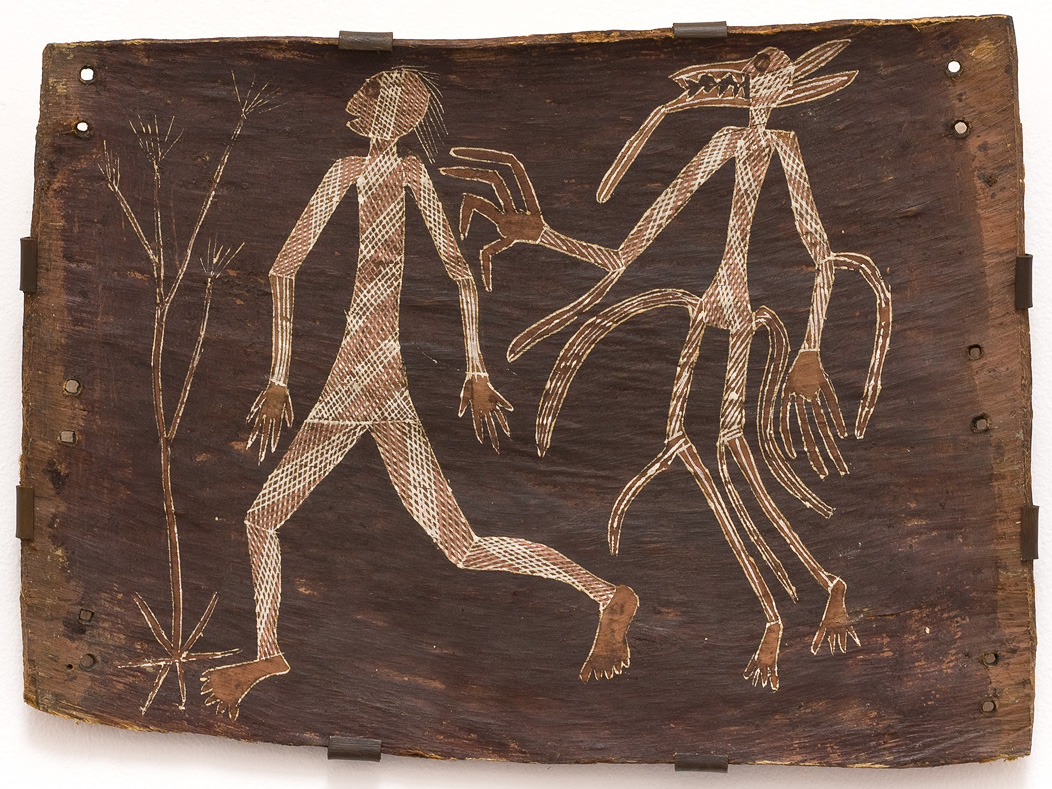
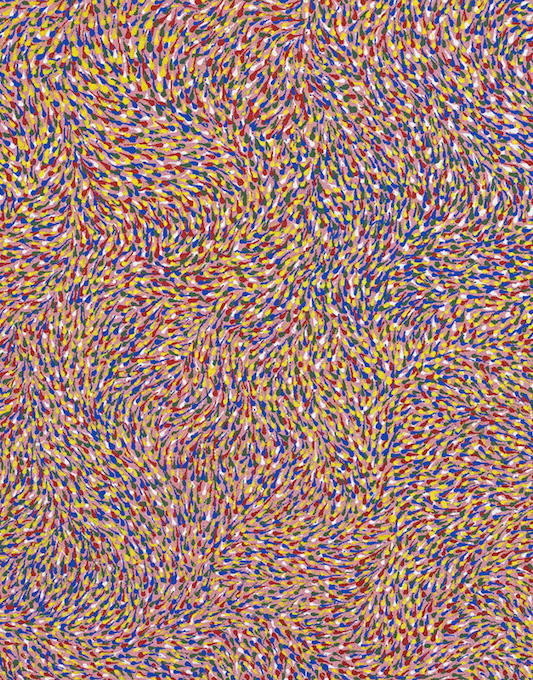

Albert Namatjira, (Ghost Gums, MacDonnell Ranges)
Another way of looking at myths and legends is when a specific subject becomes of significant importance for a particular artist, Fred Williams and the You Yangs and Upwey; Albert Namatjira and the Ghost Gums of Central Australia; or Charles Blackman and his series of Schoolgirls.
The idea of ‘myths and legends’ applies to a number of artworks in an assortment of ways. Firstly, Leonard French’s The Kings is based on actual myth and legend. In 1955, French created a series of paintings based on Homer’s Odyssey with the recurrent themes of epic narrative and the heroic. The Kings (originally three panels, with the whereabouts of the third currently unknown) was included in French’s exhibition The Odyssey Series at the Victorian Artists Society in 1955. French often drew from literary sources for his inspiration, including the Bible, Homer’s Odyssey and Iliad and the biography of Edmund Campion. Like the complex stories he has looked to, French’s paintings are intricate and layered – rich in colour and texture. The Kings features the use of painted glass in a mosaic effect, giving added strength to the geometric forms.
Leonard French 1928 – 2017 The Kings 1955 enamel and glass on composition board 122 x 50.5 cm each panel
Following on from Greek myths, we look to Australian myths and legends. The theme of the hard-working pioneer in the harsh Australian landscape is clearly evident in Artur Loureiro’s painting we have titled (An Australian Scene). This dramatic large-scaled painting looks to the pastoralist industry and associated major sheep and cattle farming, wool manufacturing in particular recognised as building the nation. The feeling of nationalism is however balanced by the natural, plein-air feel of the landscape, with golden fields and scrubby clouds across the blue skies. However, this is a painting in the vein of McCubbin’s Down on his Luck rather than Roberts’ Shearing the Rams. The central focus of the painting is a group of distressed sheep, reluctant to abandon their fallen companion. The looming shadows from either side of the picture plane are echoed by the racing bushfire curling its way across the grass, and further alert us that this is no celebration of heroic pioneering achievements. It is an epic narrative inspired by the increasing culture of an Australian identity.
 Artur Jose Loureiro 1853 – 1932 (An Australian Scene) oil on canvas 73 x 167 cm
Artur Jose Loureiro 1853 – 1932 (An Australian Scene) oil on canvas 73 x 167 cm
Another key Australian narrative is the Explorers, a theme favoured by a multitude of artists, from colonial examples where artists accompanied expeditions recording the travels and travails (see von Guerard’s Evening After a Storm Near the Island of St Paul’s (1854) showing the hardship of simply travelling to Australia); to modernist examples, Sidney Nolan’s infamous Ned Kelly and Albert Tucker’s cratered heads; to contemporary revisionist works, in particular where the indigenous point of view is given primacy.
The tragic story of the Burke and Wills expedition (1860-61) resulting in their demise, is of enduring appeal to artists. David Boyd produced a series of works of the explorers’ journey to the centre of Australia which was exhibition in 1958. He was not alone in looking to these legendary figures with fellow modernist artists Sidney Nolan and Albert Tucker also painting the subject in the mid-twentieth century. David Boyd’s painting Burke and Wills in the Desert is uncompromising in its imagery with a heightened sense of narrative achieved through his striking use of rich colours.
David Boyd 1924 – 2011 Burke and Wills in the Desert 1957-58 oil on composition board 77 x 112.5 cm
Myths and legends can grow from an earthy reality or can look to more spritely creatures. Sydney Long was keen to develop Australian allegorical characters and the ‘creation of an imaginative school that will be truly Australian.’ [1] Although Faun and Nymph may have its roots in the Greek mythology of Pan, it is painted by an artist whose work sought to create an Australian mythology, the bush setting and dazzling Australian light predominant. Long is considered Australia’s leading symbolist artist and Faun and Nymph is believed to be the last of his major art nouveau painting remaining in private hands.
Sydney Long 1871 – 1955 Faun and Nymph 1910 oil on canvas 60 x 75 cm
Of course, artists themselves create their own myths and legends, where their work becomes synonymous with a particular subject – think Whiteley and Sydney Harbour; Nolan and Ned Kelly and Blackman and his Schoolgirls
Charles Blackman 1958 – Sisters at the Crossing 1953 enamel on board 75 x 63 cm
Sisters at the Crossing (1952) is painted very early in the series of Charles Blackman’s Schoolgirl paintings, a theme which continued to interest him throughout his career and celebrated by the recent exhibition at Heide Museum of Modern Art, Charles Blackman Schoolgirls, in which this painting was included. It is strongly marked by an uneasiness present in many of Blackman’s work, straddling innocence and danger.
“Sisters at the Crossing, perhaps more powerfully than any other early painting in the series, strongly conveys a sense of alienation within an urban environment, where the two girls are silhouetted against a murky brown background and are eerily illuminated from behind.”
Emeritus Professor Sasha Grishin, catalogue essay Lauraine Diggins Fine Art Collectors Exhibition 2017, p. 44
To take A Closer Look… at the paintings mentioned, we invite you to read the essays in our catalogue which can be viewed on our website here.
Artur Loureiro (An Australian Scene) David Thomas
David Boyd Burke and Wills in the Desert Sheridan Palmer
Sidney Long Faun and Nymph David Thomas
Charles Blackman Sisters at the Crossing Sasha Grishin
The Collectors’ Exhibition 2017 is showing at Lauraine Diggins Fine Art until 29 July.
View on our website www.diggins.com.au the on-line exhibition; listen to the opening speech by Doug Hall and download the catalogue with essays by leading scholars.
L A U R A I N E · D I G G I N S · F I N E · A R T
5 Malakoff Street, North Caulfield, Vic, 3161
Telephone: (61 3) 9509 9855 Email: ausart@diggins.com.au Website: www.diggins.com.au
Gallery Hours: Tues – Fri 10am -5pm, Sat 1pm – 5pm during exhibitions
[1] Long,S., The Trend of Australian Art Considered and Discussed, Art and Architecture, Jan. 1905, p.10
Stephen Bowers on exhibition in Milan
Stephen Bowers is featured in the exhibition Alice in Wonderland showing at Officine Saffi in Milan until 14 July in a group exhibition organised by Guldagergaard International Ceramic Research Centre, Denmark and including Stephen Bowers, Jim Cooper, Malene Hartmann Rasmussen, Sergei Isupov, Sten Lykke Madsen, Kadri Pärnaments, Mara Superior and Lileng Wong.

Alice in Wonderland was first published in 1865, in a period in which reflections on art had begun to erode the concepts of realistic depiction and narrative, in other words the references to a coherent, ordinary world. The apparently light-hearted and non-committal game presented in the exhibition “Alice in Wonderland”, which originated at the Guldagergaard International Ceramic Research Centre in Denmark and that was later shown at Officine Saffi, has a dual role. The first was to invite eight different artists, born on dates varying from 1937 to 1973 in different locations including Denmark, Malaysia, New Zealand and the United States, to work on Carroll’s text, developing various reflections on it, from iconographical to conceptual. The second objective was to use this provocative approach, which at first sight seems merely skin deep, to stimulate them to declare their degree of agreement with Carroll’s statement “we’re all mad here.” It can be applied to the whole of art, which after all is a precious form of madness, in which you can escape from the tired forms of the ordinary. The participants were thus invited to produce a reflection and a declaration on their own status as artists, and more specifically their identity as ceramists.
For details about available works by Stephen Bowers, please view our stockroom
How Papunya Tula transformed Australian art
We invite you to read John Kean’s insightful essay from The Conversation, How the Men’s Painting Room at Papunya transformed Australian art.
This essay discusses the origins of the remarkable cultural and artistic phenomenon that is contemporary indigenous art and is an edited extract from the book Tjunguṉutja: from having come together, edited by Luke Scholes.
The exhibition Tjunguṉutja: from having come together featuring early Papunya paintings and documenting the rise of Western Desert art is showing at the Museum and Art Gallery of Northern Territory from July 1 until February 18, 2018.

